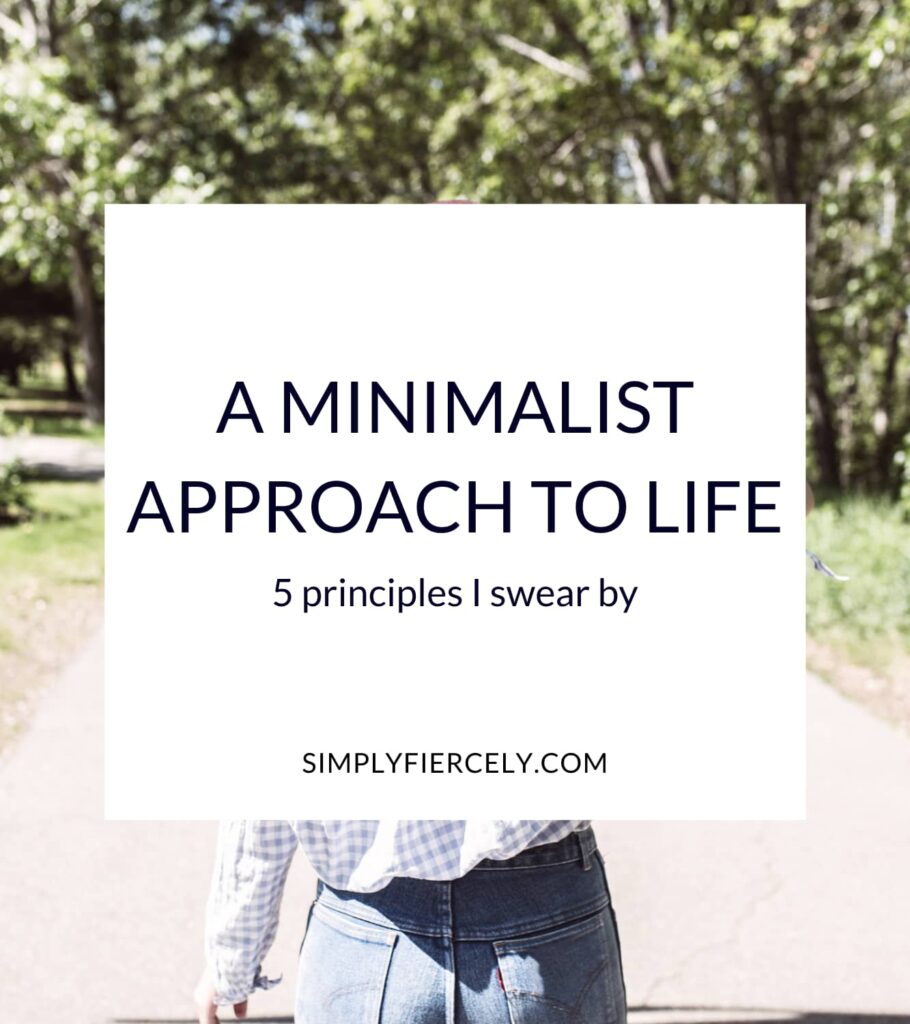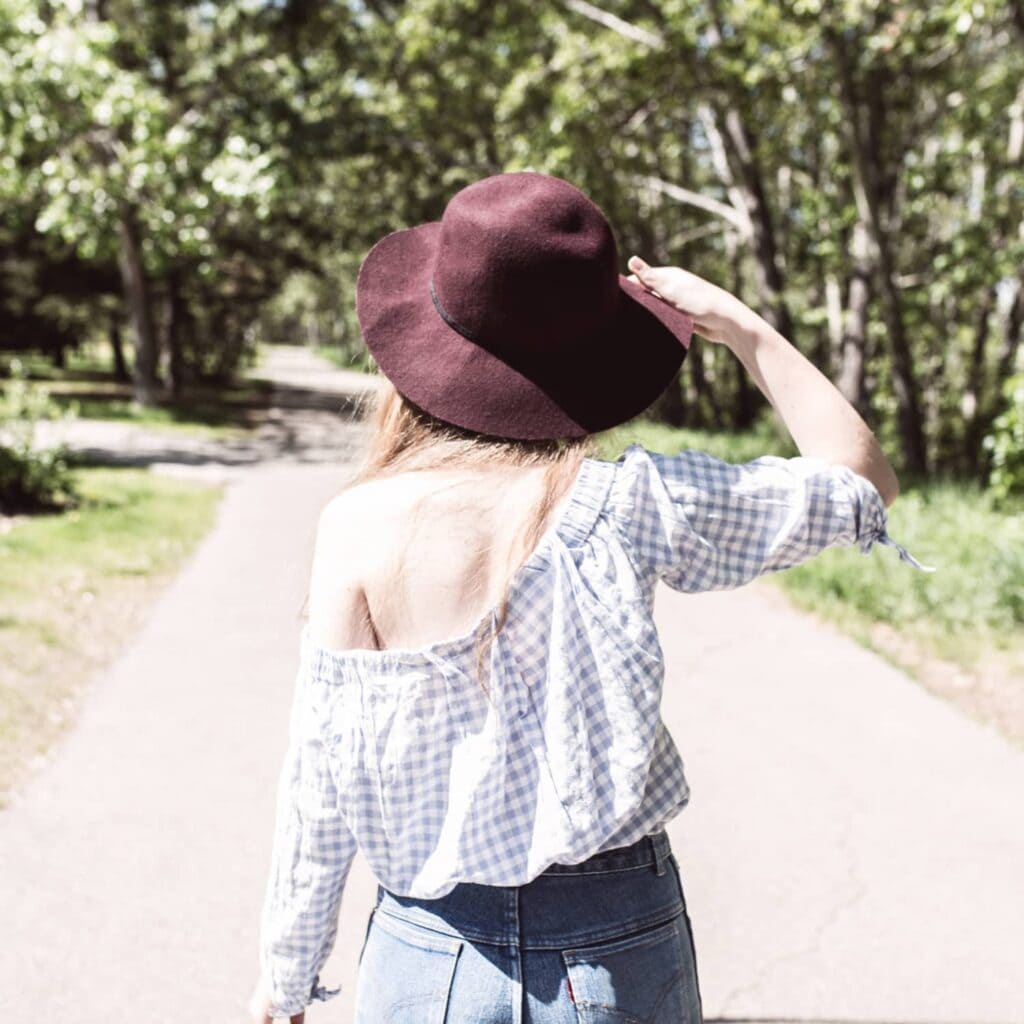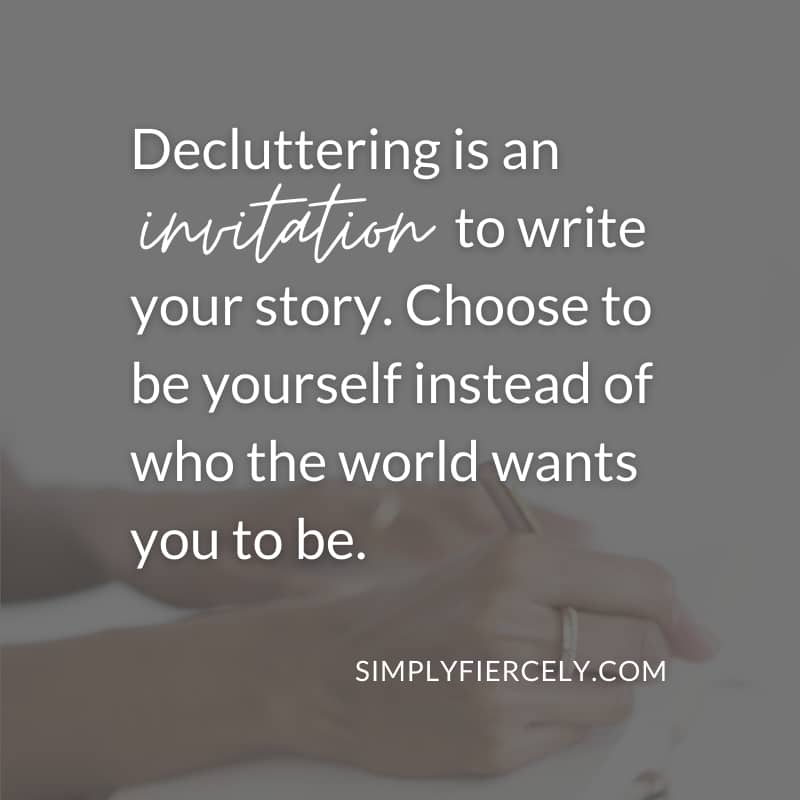If you want to take a minimalist approach to life, here are five principles that I live by. These simple ideas will help you clear your clutter and create space for joy.
I believe that minimalism is a state of mind. It’s less about what you own and more about how you think. Owning less stuff is just a byproduct of this new mindset and not the other way around.
The advantage of this approach to minimalism is that you transform your life from the inside out. It’s about so much more than having a tidy home and less stuff to clean.
You also tackle busyness, overwhelm, and mental clutter that you might not even realise is weighing you down.
When you embrace a minimalist lifestyle, you start to feel different—and for me, it was like taking off a mask. Instead of hiding behind my clutter, I was finally free to be myself.
I felt a childlike joy return. I stopped obsessing about my to-do list and started feeling excited about my days. There was less second-guessing myself and more embracing my own worthiness.
I know that I have enough, I do enough, and I am enough.
This is the beauty of a minimalist approach to life—and if you’re interested, here are five guiding principles that helped me get here.

5 Principles of Minimalism To Live By
- You ask, “How much is enough?”
- You know what you do and don’t want
- You experiment with letting go and aren’t afraid to challenge your beliefs
- You view decluttering as an opportunity
- You make rest a priority
Keep reading for more about putting this minimalist approach into action.
You ask, “How much is enough?”
Let’s imagine that you’re running a race. You’re waiting at the starting line, and when you hear the gun, you take off. At first, you pour your heart into the race, doing your best to keep up with the pack.
But after a few minutes, you start to feel uneasy. You can’t see a finish line, and there are no mile markers to indicate how far you’ve got to go. You begin to panic, wondering how long you can keep up the pace.
This is how many of us are living our lives.
There’s no clarity around how much is enough: from the shoes in our closet to the tasks on our to-do lists. Without a finish line, it’s impossible to relax because we know we still have so far to go.
It’s completely exhausting (and it’s a feeling I know all too well).
After years spent chasing everything—more clothes, more money, more recognition—I was utterly burnt out. But fortunately, I’ve since learned a powerful trick that has helped me reclaim my time and energy.
Simply asking myself, “How much is enough?”
This can apply to so many things:
- How many sweaters do I need to get through the winter?
- How much do I need to accomplish before I can feel good about ending my workday?
- How much time will I play with my kids before I take a break for myself?
Setting these limits provides immense relief and freedom. Once I have enough (of anything), I don’t have to think about it anymore. I can stop browsing the shops, stop feeling guilty about rest, and stop trying to keep up with everyone else.
I write and play by my own rules, which means I have less unnecessary clutter—in my home, head and heart.

You know what you do and don’t want
When people have too much clutter, it’s often caused by a lack of clarity.
If you don’t know what you want (or conversely, what you don’t want), you’re more likely to be pulled in a million directions. Everything feels important, and you’re easily distracted by shiny objects.
This often shows up in our closets. If you don’t know your style, you buy everything that catches your eye.
The problem? You end up with an overflowing closet and nothing to wear. Everything’s a bit mismatched…but you don’t know what to do with it all.
Again—everything feels essential.
It’s the same reason why you have a whole drawer of rarely used cosmetics, abandoned exercise equipment hidden in your garage, and a to-do list longer than your arm.
You haven’t realised that you feel your best in neutral colours, you hate high impact workouts, and you find taking the kids to playgroup exhausting.
Instead, you’re influenced by the latest make-up trends, your neighbour’s exercise routine, and what you think everyone else is doing.
BUT … when you embrace minimalism, something shifts. You realise that you can admire something without needing to make it part of your life. (Just like you can enjoy a painting in a museum without wanting to hang it in your living room.)
You’re clear about what you do and don’t want—and with this comes the courage to let go or walk away.
You experiment with letting go and aren’t afraid to challenge your beliefs
As humans, we tell ourselves stories all the time, and these beliefs impact everything in our lives, from how many towels you own to what you do for a living.
Some of these stories are valid—but many are not. They might be byproducts of our childhood (things that other people told us were true) or things that were once valid but no longer apply.
When this happens, we can end up holding onto things that no longer serve us. Fear keeps our lives busy and cluttered, and we feel stuck.
So what can you do? Well, the minimalist approach is to test, question and experiment.
You might try Project 333 and see how it feels to dress with less. Or you might rework your schedule—what can you stop doing for a while? There are so many things that feel essential … but when we put it to the test, it’s proven otherwise.
You could put half your shoe collection in storage or practice letting go of little things that bother you. It could be anything from owning fewer throw cushions to releasing unrealistic expectations.
Big or small, the point is to stay curious. Challenge what you think you need in your life, and you might be surprised by how easy it is to let go. (And if not? That’s OK too. Embrace making mistakes as part of learning, and pivot if you need to.)

You view decluttering as an opportunity
A decade ago, I decluttered over 80% of my belongings. But it wasn’t easy for me (at least, not at first). I spent several years going in circles—I wanted to own less, but decluttering was unbearable for me. Letting go was just so painful.
Fortunately, a series of personal events gave me a new perspective (you can read my minimalist story here if you want all the details). But to make a long story short, I started to think about decluttering differently.
My focus shifted. Instead of feeling sad about letting go, I started to look at decluttering as a way of rewriting my life.
I shared this story on Instagram a while back, and I think it sums this up nicely:
Consider a sculptor, slowly chipping away at stone. ⠀⠀⠀⠀⠀⠀⠀⠀⠀
He’s not focused on what falls away. Instead, his eyes are on his vision. Little by little, he carves away the excess, and his dream comes to life.⠀⠀⠀⠀⠀⠀⠀⠀⠀
We can do the same in our lives every time we choose to let go of something that no longer serves us. ⠀⠀⠀⠀⠀⠀⠀⠀⠀⠀⠀
We stop following the trends and trying to please everyone. Instead, we make a decision about what matters, and we hold this vision close to our hearts. ⠀⠀⠀⠀⠀⠀⠀⠀⠀
And little by little, we chip away at the excess and bring our dreams to life too.
Decluttering isn’t about giving up the things that add value to our lives. Instead, it’s about letting go of what holds us back—and with this mindset, it becomes empowering. You are curating a life that reflects your true self and letting go of what doesn’t belong.
If this speaks to you, be sure to download my free Mindful Decluttering guide. Simply subscribe using the form below for instant access.
You make rest a priority
One thing I’ve learned over the years is that self-care and rest are essential for minimalist living. If we don’t take care of ourselves, we look outwards for something to make us feel better.
This can lead to excessive shopping, unhealthy relationships or even overworking (to name just a handful of vices!). These are the things that keep our lives busy and cluttered, yet we keep doing it.
In a society that seemingly values hard work above all else, we’ve forgotten how to rest—or we’re too afraid to try. (After all, who hasn’t heard that nagging voice that roars to life as soon as you make a cup of coffee or put your feet up. Shouldn’t you be doing something else?)
As a minimalist, I’m not immune to hearing this voice, but I’ve learned to push back. As a former workaholic and shopaholic, I’ve been down that road, and I know that doing more won’t lead to me the life I want.
So instead, I’m fiercely protective about taking care of myself. I leave the dishes in the sink, and emails go unanswered, but I know that at the end of the day, rest is the ultimate productivity hack.
Learn More About Minimalist Living
I hope you enjoyed learning about my minimalist approach to life, but I should also mention that I am an imperfect human (just like we all are!) There are still days that I struggle to apply or even believe everything on this list.
But that’s OK. Minimalism is not about having a perfect home or being perfectly intentional with everything you do. Instead, it’s about showing up more often than not, being open to new ideas, and learning more about yourself.
If you want to continue your journey, here are a few of my favourite blog posts on minimalist living to help you:
- How to Live A Minimalist Life (A Complete Blueprint)
- 6 Powerful But Unexpected Minimalist Lifestyle Tips
- Minimalism Before And After: How It Changed My Life
What minimalist principles do you believe in? Let us know in the comments!

